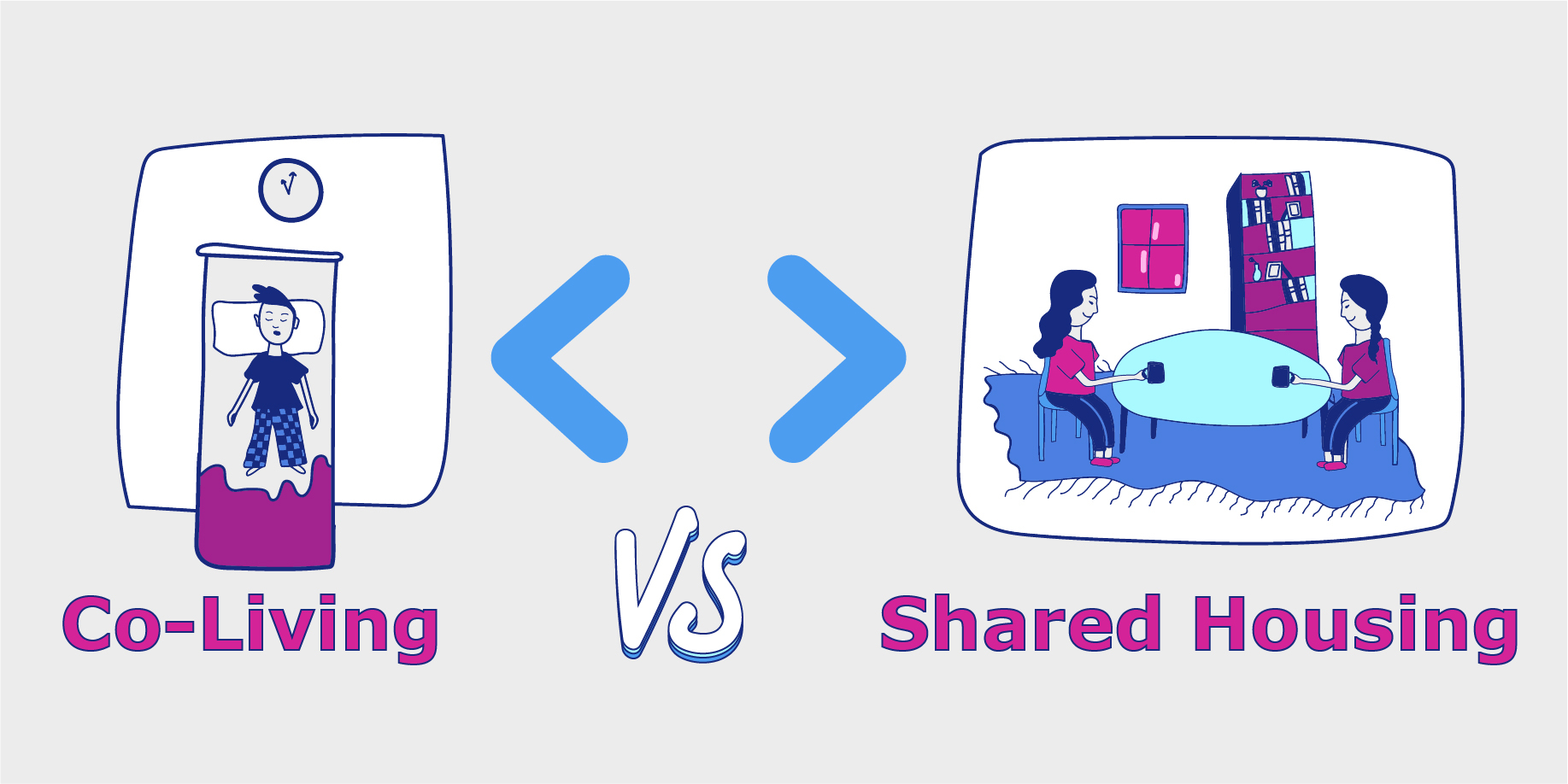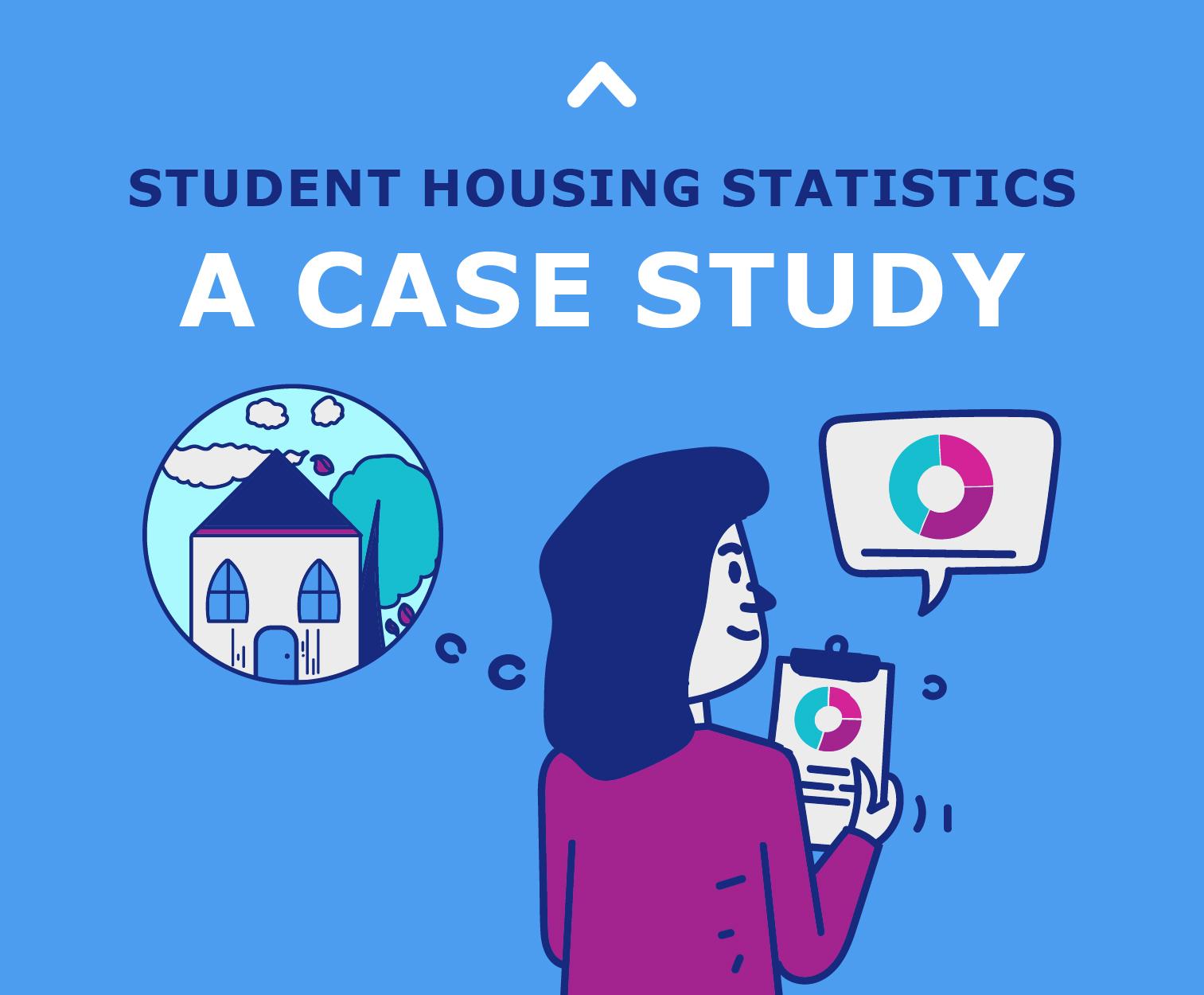Co-living Vs Shared Housing
Student Housing
4 mins read
Share

Updated at: 25 November, 2025
Published at: 20 April, 2021
By Hadeel Hossam
Co-living Vs Shared Housing
Student Housing
4 mins read

Updated at: 25 November, 2025
Published at: 20 April, 2021
By Hadeel Hossam
Share
The world of accommodation is vast with various types and terminology that could be a bit overwhelming for anyone stepping into it for the first time. Between co-living, PBSAs, and shared housing, there are many student accommodation options for you to choose from. While they are similar in their main purpose, each option has unique features that differentiate it from the other. We previously examined the difference between PBSA and co-living in our blog, Co-Living and PBSA: Are They The Same? So, what about shared housing? Is it the same as co-living? To find out the difference between the two, we should first examine each concept on its own.
Co-Living
As a new take on an already existing concept, co-living is an accommodation model that combines privacy with a full, enhanced social experience. Co-living spaces are intentionally made to house a group of people, each in their own private room while also providing communal areas and leisure facilities. They are managed by companies that work to ensure maximum comfort for their residents. Co-living has the advantage of complete peace of mind when it comes to utilities and bills since they are usually included in the rent. Other co-living perks include:
1. Flexibility
Co-living usually offers long term and short term lease periods; however, you are not obliged to sign a lease agreement. This gives residents the freedom to stay as long as they want without feeling like they’re trapped.
2. Built-In Features and Facilities
The unique selling point of co-living spaces is the great services and communal social areas. You can have access to communal lounge areas, dining areas, cinema rooms, games rooms, roof terraces, garden areas, gyms, spas, laundrettes, and sometimes even a weekly cleaning service is included in these spaces. Other features include heating and air conditioning as well as free Wi-Fi. Some properties offer on-site maintenance in case anything in your room needs to be fixed.
3. Sense of Community
Living in a new city away from friends, family, and places you’ve known your whole life can get lonely sometimes. Co-living helps to reduce this feeling of solitude by creating a community of like-minded people that can support each other as they discover a new place. It creates a sense of belonging that can ease the transition to a new place and feelings of home-sickness.
4. Shared Experiences
Being in a co-living space probably means you’re not from the area, and being new in a city can be quite daunting. However, in a co-living space, you’ll be housed with people with similar situations, making it easier for you to connect and have shared experiences. You can navigate living in your new city with them and share any helpful tips and hacks to get the best out of each experience.
Shared Housing
Shared housing is when a group of people decide to share a regular home or flat that was not specifically built for the purpose of co-living. Like co-living space, shared housing means having a private room with a shared bathroom, kitchen and lounge area. There aren’t, however, the same type of communal social spaces like in co-living spaces. A landlord manages shared houses, and when it comes to utilities and bills, they are usually divided between the flatmates equally.
1. Freedom of Choice
The main benefit of living in a shared house is the freedom to make different choices about your living conditions; in most cases you can choose the people who you share the flat or home with. This means you will live with people you already know and are comfortable with. You can also choose how to style and decorate your own room and the entire flat with your flatmates to fit your personal taste, unlike in co-living spaces.
2. Cost-Friendly
Another advantage of shared housing is that it’s considered more cost-effective than living alone since you split rent and utilities with one or more flatmates.
3. Familiarity
Living in shared accommodation could be regarded as cosier and more comfortable since it’s with people you know and you have control over the space.
So, What’s The Difference?
To sum up, what are the key differences between co-living and shared housing?
1. Space: both co-living and shared housing offer residents a private room but co-living can also have the option of having your own private bathroom and kitchen, while shared housing will mean you’ll share them with flatmates. Due to the many communal areas, co-living is more spacious than a flat or traditional home, although you’ll probably also share with more people.
2. Amenities: Co-living offers a wide range of amenities included in the rent, while in shared housing, the rent pays only for the roof over your head.
3. Location: co-living spaces are usually ideally located in the city’s heart with easy access to transportation and places around the city. Shared housing, especially traditional homes, are usually located on the outskirts of a city. Flats, however, may be located in the city.
4. Flexibility: Shared housing requires signing a lease agreement of at least 12 months, while co-living doesn’t require it and has flexible tenancy lengths.
5. Residents: While many college students choose to live in shared houses, it is generally more common for students who have already been studying for a couple of years. Meanwhile, co-living is usually full of either international students, working professionals, or travellers. If you’re looking for a community made up of only students, then you should consider living in PBSA.
6. Community: Both co-living and shared housing offer a sense of community and belonging; the difference is that you can choose that community in shared housing, while in co-living, you get the thrill of meeting new people from all around the world.
Now that you’re armed with knowledge on what it means to live in a co-living space or a shared house, you can proceed to make an informed decision. Just remember that whichever you choose should cater to your needs as a student; affordable, close to campus, and has all the amenities you might need. Contact one of our Casita accommodation experts to help guide you to the perfect student accommodation to make the most out of your experience studying abroad.
Student Housing
By Hadeel Hossam
Share
Student Housing
Updated at:
Published at:
By Hadeel Hossam
Share


